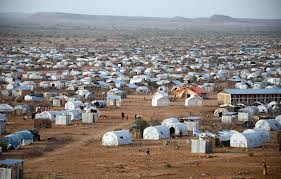UNHCR seeks 500mln USD for return of Somalia refugees in Kenya

The UN refugee agency said Wednesday it’s seeking 500 million U.S. dollars from donors for the voluntary return of Somali refugees from camps in Kenya.
Since December 2014, Office of the UN High Commissioner for Refugees (UNHCR) has helped 5,300 refugees return to Somalia from Kenya’s Dadaab refugee camps and another 4,500 have signed up at a help desk at the camps to go back.
UNHCR said in a statement received in Nairobi that senior officials from Kenya, Somalia and EU are in Geneva to mobilize more international support for creation of conditions for voluntary return and sustainable reintegration in Somalia as well as the security and resilience of refugees and host communities in Kenya.
“The initial plan of action, which is aligned with the Somalia New Deal Compact framework, requires a total of 500 million dollars and will run for two years until the end of 2017,” the statement said.
The statement said the UN High Commissioner Antonio Guterres will open a pledging conference on Wednesday to help galvanize financial support for the return
“Delegates from more than over 40 countries and organizations will discuss how to concretely prepare for voluntary returns of Somali refugees from the region and enhance absorption capacity in areas of return in Somalia by strengthening humanitarian and development actions,” it said.
The main focus of the conference will be on improving security and law enforcement, rehabilitation of infrastructure and the environment, expansion of access to education, water and sanitation services, health care provision, shelter, agriculture and the creation of job opportunities.
Over 2 million Somalis remain displaced in the region, including some 1.1 million in their own country and 967,000 as refugees in the neighboring countries.
“We need to invest in Somalia so that some of the refugees who are currently stranded in refugee camps can go home and participate in rebuilding their country,” Guterres said.
“That would benefit not only Somalia and the Somali refugees, but the entire region,” he added. Returning refugees are assisted with transport to their places of origin, mostly in Kismayo, Mogadishu, Baidoa and Luuq in South and Central Somalia.
They also receive a cash grant, food and basic domestic items such as sleeping mats, mosquito nets, a solar lantern, hygiene supplies and kitchen utensils to help them start a new life.
According to UNHCR, more than 26,000 Somali refugees have fled violence in Yemen and returned to Somalia, mostly to Mogadishu.
The majority (420,000) are living in Kenya, mostly in the five refugee camps in Dadaab in the northeast of the country. Nearly 250,000 Somali refugees are living in Ethiopia and a similar number in Yemen.
Kenya, which hosted protracted negotiations that culminated in the formation of the transitional federal government of Somalia, says the refugee situation continues to pose security threats to Nairobi and the region apart from the humanitarian crisis.
Kenya believes Somalia militants, Al-Shabaab, who killed 148 people at Garissa University early in April are behind a spate of insecurity that has hit several parts of northern, Nairobi and coastal regions.